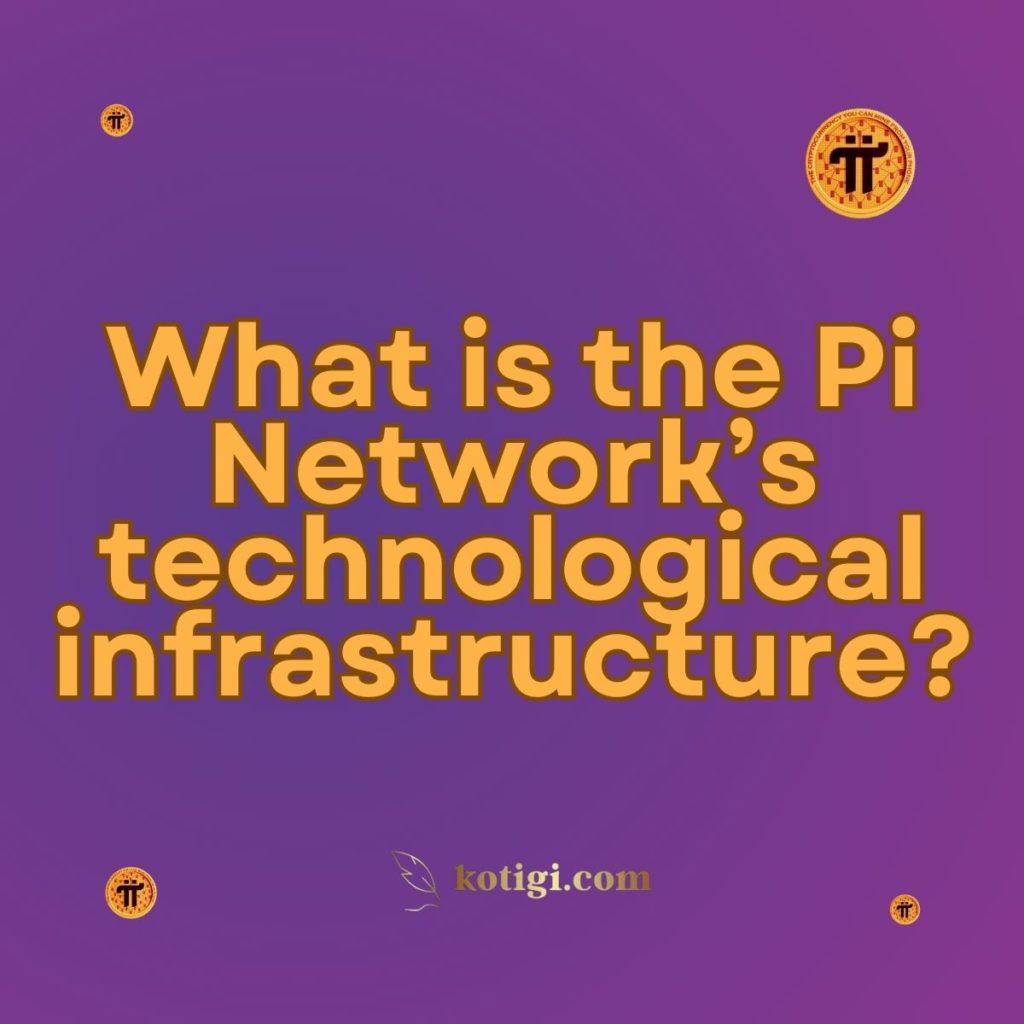
What is the Pi Network’s technological infrastructure?
Pi Network’s technological infrastructure encompasses its blockchain architecture, consensus mechanisms, mining algorithms, and user interface design, all working together to create a user-friendly and secure cryptocurrency ecosystem.
Introduction
In the rapidly evolving landscape of cryptocurrency, a robust technological infrastructure is essential for ensuring efficiency, security, and user satisfaction. Pi Network, designed to make cryptocurrency accessible to everyone, relies on a well-thought-out technological framework to support its operations. This post delves into the key components of Pi Network’s technological infrastructure, including its blockchain architecture, consensus mechanisms, mining algorithms, and user interface design. By understanding these elements, users can appreciate how Pi Network facilitates a seamless cryptocurrency experience for both novice and experienced users.
Understanding Technological Infrastructure in Cryptocurrency
Technological infrastructure refers to the underlying systems and technologies that support a cryptocurrency platform’s functionality. A well-designed infrastructure is crucial for ensuring that a platform operates smoothly, securely, and efficiently. A strong technological infrastructure is vital for several reasons, including scalability, security, and enhancing user experience. It enables the platform to accommodate an increasing number of users and transactions without performance degradation while protecting user data and assets from potential threats and vulnerabilities.
The technological infrastructure of a cryptocurrency platform consists of several key components, including blockchain architecture, consensus mechanisms, mining algorithms, and user interfaces. Each of these elements plays a crucial role in the overall functionality and performance of the platform.
Blockchain Architecture
Pi Network’s blockchain architecture serves as the foundation of its technological infrastructure. This architecture defines how data is organized, stored, and processed within the network. Pi Network utilizes a unique blockchain structure designed for optimal performance, which is modular and allows for flexibility and scalability as the user base grows.
Structure of Pi Network’s Blockchain
The platform employs a layered architecture that separates different functions of the blockchain. This design improves efficiency and simplifies maintenance. Each layer serves a specific purpose, ensuring that the overall system operates cohesively.
Distributed Ledger Technology
Pi Network utilizes Distributed Ledger Technology (DLT) to enable secure and transparent transaction recording across a decentralized network. This enhances trust among users and ensures that all transactions are verifiable.
Data Management Strategies
Efficient data management is crucial for the smooth operation of the blockchain. Pi Network implements advanced data management techniques to ensure quick access and processing of transaction data. The platform optimizes data storage solutions to minimize redundancy and maximize accessibility, allowing for faster transaction processing times.
Real-Time Access to Data
The architecture supports real-time access to transaction data, enabling users to view their balances and transaction history instantly. This feature enhances user experience and provides transparency in all operations.
Consensus Mechanisms
Consensus mechanisms are integral to the security and reliability of a blockchain. They determine how transactions are validated and added to the blockchain. Pi Network employs a unique consensus mechanism tailored to its community-focused model, which enhances both security and accessibility.
Social Consensus Approach
Pi Network utilizes a social consensus approach where users validate transactions based on their network connections. This mechanism encourages community involvement, ensuring that transactions are confirmed by trusted members of the network.
Delegated Proof of Stake
The platform may incorporate elements of Delegated Proof of Stake (DPoS), allowing users to delegate their voting power to trusted nodes. This structure ensures a more efficient and democratic transaction validation process.
Advantages of Consensus Mechanisms
The consensus mechanisms employed by Pi Network offer several advantages, including energy efficiency and increased user engagement. By utilizing social consensus, Pi Network minimizes energy consumption typically associated with traditional mining, making it more environmentally friendly.
Enhancing User Engagement
The focus on community validation fosters user engagement, strengthening the sense of ownership within the network. Users are more likely to participate actively when they feel their contributions directly impact the network’s success.
Mining Algorithms
Mining is a fundamental aspect of many cryptocurrency platforms, as it ensures transaction validation and network security. Pi Network’s mining approach is designed to be accessible and user-friendly, allowing users to mine Pi coins using their mobile devices.
Mobile Mining Accessibility
This innovative approach democratizes access to cryptocurrency mining, enabling anyone with a smartphone to participate. The low barrier to entry eliminates the need for expensive hardware, making cryptocurrency more accessible to a broader audience.
User Experience in Mining
The mobile application provides a seamless user experience, allowing users to mine Pi coins effortlessly while engaging with the platform. The app is designed to be user-friendly, ensuring that even those new to cryptocurrency can navigate it easily.
Mining Algorithm Efficiency
The mining algorithm used by Pi Network is designed for efficiency and security. It rewards users based on their engagement with the app, encouraging active participation in the ecosystem.
Resource Optimization
The mining process is optimized to consume minimal device resources. This ensures that users can continue to use their smartphones for other tasks while mining, making it convenient for them to participate.
User Interface Design
A well-designed user interface is crucial for enhancing user experience and ensuring that users can navigate the platform easily. Pi Network prioritizes creating an intuitive and user-friendly interface that caters to users of all experience levels.
Intuitive Navigation Features
The app’s design features clear navigation, allowing users to access various functions quickly, such as mining, transactions, and community engagement. A straightforward layout helps users find what they need without confusion.
Accessible Information Resources
Relevant information and resources are readily available within the app, helping users understand how to participate effectively in the network. This accessibility supports user education and encourages greater involvement.
Community Engagement Options
To foster a sense of community, Pi Network integrates various engagement features within its user interface. Users can connect with friends and community members, encouraging collaboration and sharing within the ecosystem.
Feedback and Continuous Improvement
Pi Network actively solicits user feedback to continuously improve the user interface and overall experience. This commitment to user input ensures that the platform evolves with user needs and preferences.
Conclusion
Pi Network’s technological infrastructure is a critical component of its success, enabling it to provide a user-friendly and secure cryptocurrency experience. With its innovative blockchain architecture, efficient consensus mechanisms, accessible mining algorithms, and intuitive user interface, Pi Network is well-positioned to meet the needs of its growing user base. As the cryptocurrency landscape continues to evolve, Pi Network’s commitment to enhancing its technological infrastructure will play a vital role in ensuring its sustainability and user satisfaction.
Key Takeaways:
- Pi Network’s technological infrastructure encompasses blockchain architecture, consensus mechanisms, mining algorithms, and user interface design.
- A robust infrastructure is essential for scalability, security, and user experience in cryptocurrency platforms.
- Pi Network employs a layered blockchain architecture and distributed ledger technology for optimal performance.
- The platform utilizes a unique social consensus mechanism that encourages community involvement and energy efficiency.
- Mobile mining allows users to participate in cryptocurrency mining using their smartphones, lowering the barrier to entry.
- The user interface is designed for intuitive navigation, fostering community engagement and user satisfaction.





